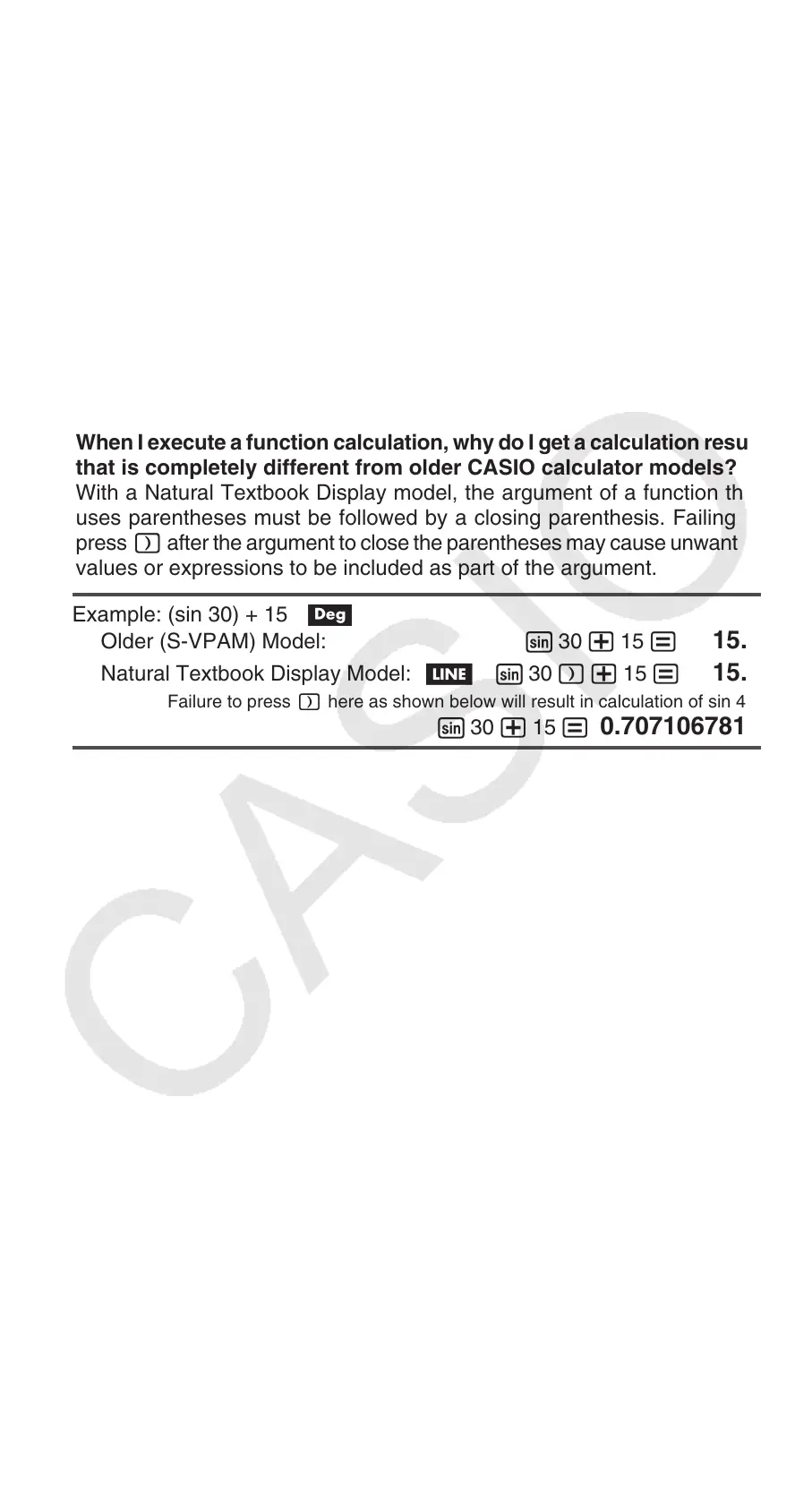E-28
k What is the difference between Ans memory, independent memory,
and variable memory?
Each of these types of memory acts like “containers” for temporary storage
of a single value.
Ans Memory: Stores the result of the last calculation performed. Use this
memory to carry the result of one calculation on to the next.
Independent Memory: Use this memory to totalize the results of multiple
calculations.
Variables: This memory is helpful when you need to uses the same value
multiple times in one or more calculations.
k What is the key operation to take me from the STAT, EQN, or BASE-N
Mode to a mode where I can perform arithmetic calculations?
Press N1(COMP).
k How can I return the calculator to its initial default settings?
Perform the following operation: 19(CLR) 1(Setup) =(Yes)
k When I execute a function calculation, why do I get a calculation result
that is completely different from older CASIO calculator models?
With a Natural Textbook Display model, the argument of a function that
uses parentheses must be followed by a closing parenthesis. Failing to
press ) after the argument to close the parentheses may cause unwanted
values or expressions to be included as part of the argument.
Example: (sin 30) + 15 v
Older (S-VPAM) Model: s 30 + 15 = 15.5
Natural Textbook Display Model: b s 30 )+ 15 = 15.5
Failure to press ) here as shown below will result in calculation of sin 45.
s 30 + 15 = 0.7071067812

